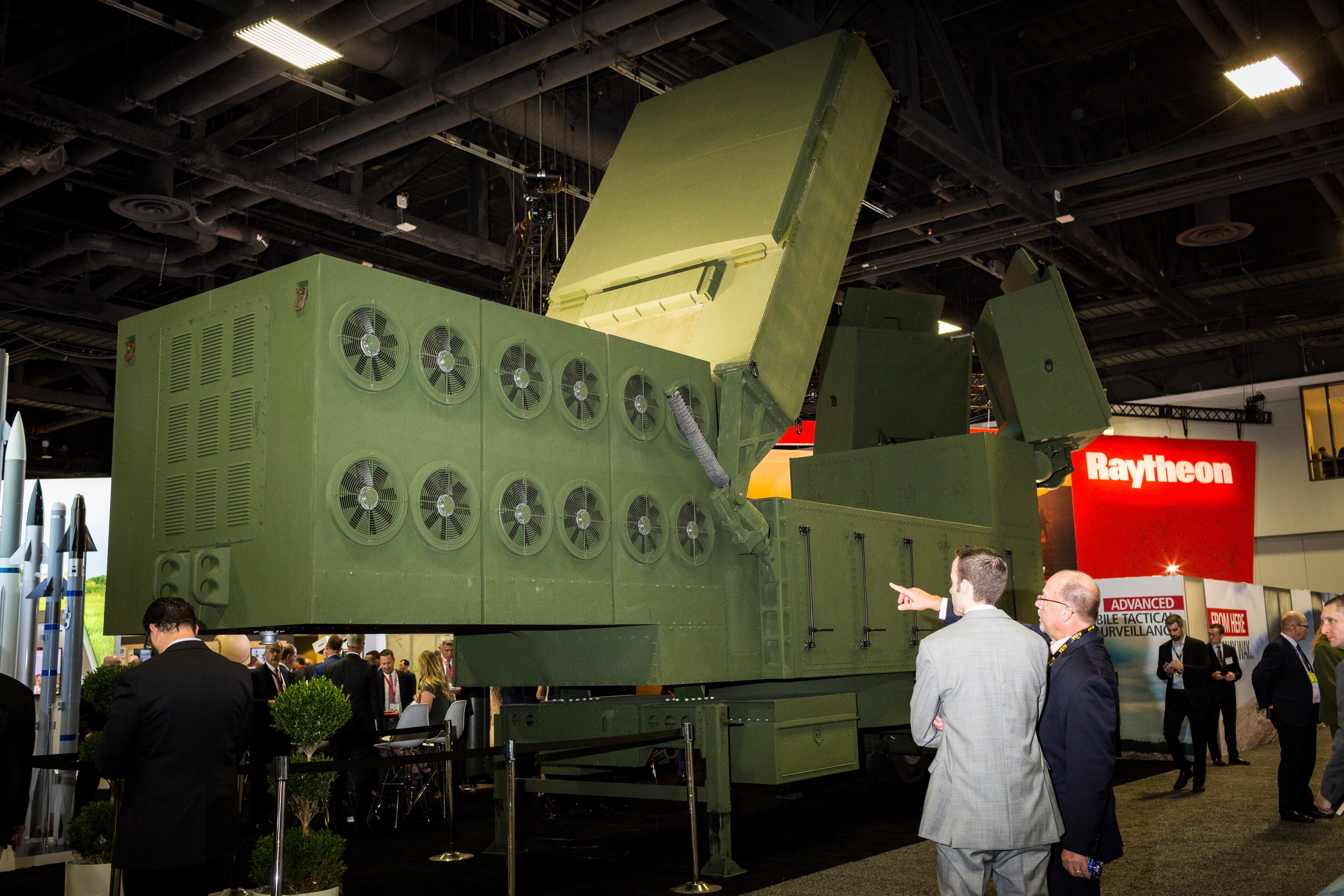WASHINGTON — The U.S. Army is expected imminently to choose a winner to build a new radar for the Patriot air and missile defense system, and Raytheon has boldly brought its massive 360-degree offering in the competition to the Association of the U.S. Army’s annual conference.
The service held a “sense-off” at White Sands Missile Range, New Mexico, between three working radars from Raytheon, a Lockheed Martin and Elta Systems team, and Northrop Grumman. The service analyzed the results and is said to be in contract negotiations with the winner, but that winner has not yet been named.
While the winner of the competition for a lower-tier air and missile defense sensor, or LTAMDS, was expected to be announced in September, Army Futures Command chief Gen. Mike Murray told Defense News at the end of that month that the decision would come in October.
The winner will build six prototypes by the end of fiscal 2022.
The radar that Raytheon specifically designed for the Army uses next-generation gallium nitride technology and is 7 feet longer but 11 inches more narrow than the radar unit. But it no longer requires outrigger stabilizing legs. Rather, the system is held stable by jacks underneath, which means its takes up less space on the sides, according to Bob Kelley, Raytheon’s director of domestic integrated air and missile defense programs for business development and strategy.
The radar meets all of the Army’s mobility and transport requirements, Kelley said, including fitting in a C-17 aircraft.
There is one large, forward-facing radar array and two smaller arrays — roughly 50 percent of the size of the legacy Patriot system’s array — in the back, which achieve a constant 360-degree capability, Kelley said. And while the radar panels in the back are smaller, they are twice as capable due to advancements in gallium nitride technology, he added.
Though the Army backed off its 360-degree detection capability requirement for the competition, Raytheon has been steadfast about keeping that capability in its offering. The company was even passing out red lanyards at AUSA advertising LTAMDS that read: “Now is no time for a blind spot.”
In addition to being able to constantly cover 360 degrees, the radar can see farther than the currently fielded Patriot. The Patriot is unable to fully support the maximum kinematic range of the Patriot Advanced Capability-3 Missile Segment Enhancement that it fires. The Army’s effort to tie its Terminal High Altitude Area Defense System with Patriot is able to help the MSE missile reach it’s full potential.
The LTAMDS will be able to fully support current missile systems including PAC-3 MSE range capability and will also support future missiles ranges as well, Kelley said.
The system was also built with an open architecture so that the Army can more easily add capability to the radar than it has been able to in the past, he said.
Raytheon also designed the radar to be easily maintainable in the field and easier to use and, therefore, subsequently making it easier to train to use and fix. According to Kelley, the radar was designed by engineers and former air defense artillery soldiers keeping ease of use in mind.
The radar should easily tie into the Army’s future command-and-control system — the Integrated Battle Command System — because it was designed “native to that network,” Kelley said.
Replacing the Patriot radar has been a long time coming. The radar was first fielded in the 1980s, and the Army previously attempted to replace the system with Lockheed Martin’s Medium Extended Air Defense System through an international co-development effort with Germany and Italy. But that program was canceled in the U.S. after closing out a proof-of-concept phase roughly six years ago.
Since then, the Army has studied and debated how to replace the Patriot radar while Raytheon continues to upgrade its radar to keep pace with current threats. The service has acknowledged that there will come a point where radar upgrades will be unable to keep up with future threats.
Taking years to decide, the service moved forward on a competition to replace the radar in 2017 and chose four companies to come up with design concepts for the capability — Raytheon, Lockheed Martin, Northrop Grumman and Technovative Applications.
Toward the end of 2018, Raytheon and Lockheed were chosen to continue technology development under that program. But then the Army redirected its plans into a sense-off competition last fall.
Jen Judson is an award-winning journalist covering land warfare for Defense News. She has also worked for Politico and Inside Defense. She holds a Master of Science degree in journalism from Boston University and a Bachelor of Arts degree from Kenyon College.








